Durga, the embodiment of strength, courage, and divine power, stands as one of the most revered deities in Hinduism. Known as the fierce protector, Durga is both nurturing and fearsome, a paradox that deeply resonates with many. But who exactly is this goddess, and what makes her such a central figure in Hinduism?
For those exploring the profound spiritual realms of Hindu deities, understanding Durga offers a deep dive into the heart of divine femininity and cosmic power. This article will guide you through her origins, her relationship with other key figures like Shiva and Ganesh, and her significance in Hindu mythology and contemporary practice. Let’s embark on this journey to discover Durga’s captivating essence.
Origin of Durga
Durga’s origin story is as powerful as the goddess herself. She was created by the combined energies of the principal male gods—Brahma, Vishnu, and Shiva—during a time when the demon Mahishasura was wreaking havoc on heaven and earth. None of the male deities could defeat Mahishasura, so they channeled their collective divine energies into creating Durga, a supreme warrior goddess.
Armed with weapons from each of the gods and riding a lion, Durga symbolizes the invincible female force. She represents the feminine power that lies dormant within the universe, capable of both creation and destruction. It is this blend of nurturing mother and fierce protector that makes Durga so compelling.
Iconography of Durga
When you envision Durga, you might picture her with multiple arms, each holding a weapon, her calm yet determined expression, riding a lion or tiger. Every element of her image is symbolic. Her multiple arms signify that she is omnipotent and capable of tackling any challenge from all directions. The lion or tiger represents courage and ferocity, which Durga uses to subdue evil.
Each weapon she holds has been gifted by the gods to aid her in battle, and they signify different virtues:
- The trident (Trishul) from Shiva symbolizes the balance of the three forces: creation, preservation, and destruction.
- The chakra (discus) from Vishnu represents the power to destroy evil and protect righteousness.
- The sword stands for knowledge, cutting through ignorance.
Her serene expression, even in the midst of battle, reminds devotees that true strength comes from inner peace.
Durga’s Connection to Shiva and Ganesh
Durga’s divine family also plays a crucial role in Hindu mythology. She is often depicted as the consort of Shiva, the god of destruction, and the mother of Ganesh, the remover of obstacles.
Durga and Shiva: A Cosmic Partnership
Durga and Shiva are two sides of the same cosmic coin. Where Shiva embodies destruction and the end of cycles, Durga represents the force that battles to preserve and protect dharma (righteousness). Together, they reflect the cycle of creation, preservation, and destruction—essential processes in the universe. Durga is often seen as Shiva’s active energy, or Shakti, without which he cannot perform his cosmic duties.
This dynamic also speaks to the balance of masculine and feminine energies, known as Purusha (passive consciousness) and Prakriti (active energy). Durga, as Prakriti, ensures that life continues and that the balance between good and evil is maintained.
Ganesh, the Beloved Son
Ganesh, Durga’s son, holds a special place in Hindu households and is worshipped before any new beginning. His role as the remover of obstacles and the god of wisdom beautifully complements Durga’s protective and nurturing aspects. While Durga battles external forces of evil, Ganesh helps devotees clear their internal obstacles—whether they be emotional, intellectual, or spiritual.
Fun Fact: It is common practice to invoke Ganesh before any ritual dedicated to Durga, as his blessings ensure the removal of any hurdles.
Durga in Hindu Festivals
Durga’s most prominent celebration comes during the festival of Navratri, a nine-day event where devotees worship the goddess in her nine different forms, each representing different aspects of the divine feminine. The festival culminates in Vijayadashami (also known as Dussehra), celebrating Durga’s victory over Mahishasura, symbolizing the triumph of good over evil.
During these days, many Hindus observe fasts, perform rituals, and participate in dances like Garba and Dandiya. Durga’s presence is invoked in homes, temples, and hearts as devotees seek her blessings for strength, prosperity, and protection.
The Global Reverence for Durga
Though primarily celebrated in India, Durga’s influence extends globally, particularly among Hindu communities in Sri Lanka, Nepal, Bangladesh, and even the diaspora in the United States, Canada, and the UK. Her festivals are celebrated with as much fervor abroad as they are in her homeland, symbolizing her universal appeal as a protector and mother figure.
Lessons from Durga’s Myths
Durga’s stories offer deep moral and spiritual lessons that remain relevant today. Her battle with Mahishasura teaches us that evil, no matter how powerful, can never triumph over righteousness. It also illustrates that true power lies not just in brute strength but in wisdom, courage, and faith.
Moreover, Durga embodies the strength and resilience that exists within all of us. Her stories inspire us to confront our inner demons—be they fear, doubt, or ignorance—with the same courage that she showed on the battlefield.
Durga as a Modern Icon for Empowerment
In contemporary times, Durga is often seen as a symbol of women’s empowerment. Just as she stood fearlessly against Mahishasura, many women today draw strength from her example to face personal and societal challenges. Her fierce yet compassionate nature reminds us that femininity and strength are not mutually exclusive.
Worshipping Durga in Today’s World
Worshipping Durga today can take many forms. From the daily recitation of the Durga Chalisa (a 40-verse hymn praising the goddess) to participating in grand pujas during Navratri, Durga worship remains a vital practice for many. Her mantras are known to protect against negativity, bring prosperity, and empower devotees with confidence and clarity.
For those seeking a closer connection to Durga, adorning themselves with spiritual accessories like Rudraksha beads or Yantras can enhance spiritual growth and provide protection. These sacred items, available at spiritualguru.lk, help devotees invoke her presence and energy in their daily lives.
Conclusion
Durga is more than just a deity in the Hindu pantheon; she is a symbol of divine femininity, cosmic energy, and boundless strength. Whether you’re drawn to her as a protector, a mother, or a warrior, Durga’s influence permeates all aspects of life, reminding us to face challenges with grace and courage.
Explore the world of Durga and other Hindu deities like Shiva and Ganesh, and embrace the spiritual tools that can deepen your connection to them. To enhance your spiritual journey, consider incorporating sacred items into your practice—visit spiritualguru.lk for a curated selection of spiritual accessories that resonate with Durga’s energy.
Let Durga’s story inspire you to face life’s battles with strength, wisdom, and unwavering faith.

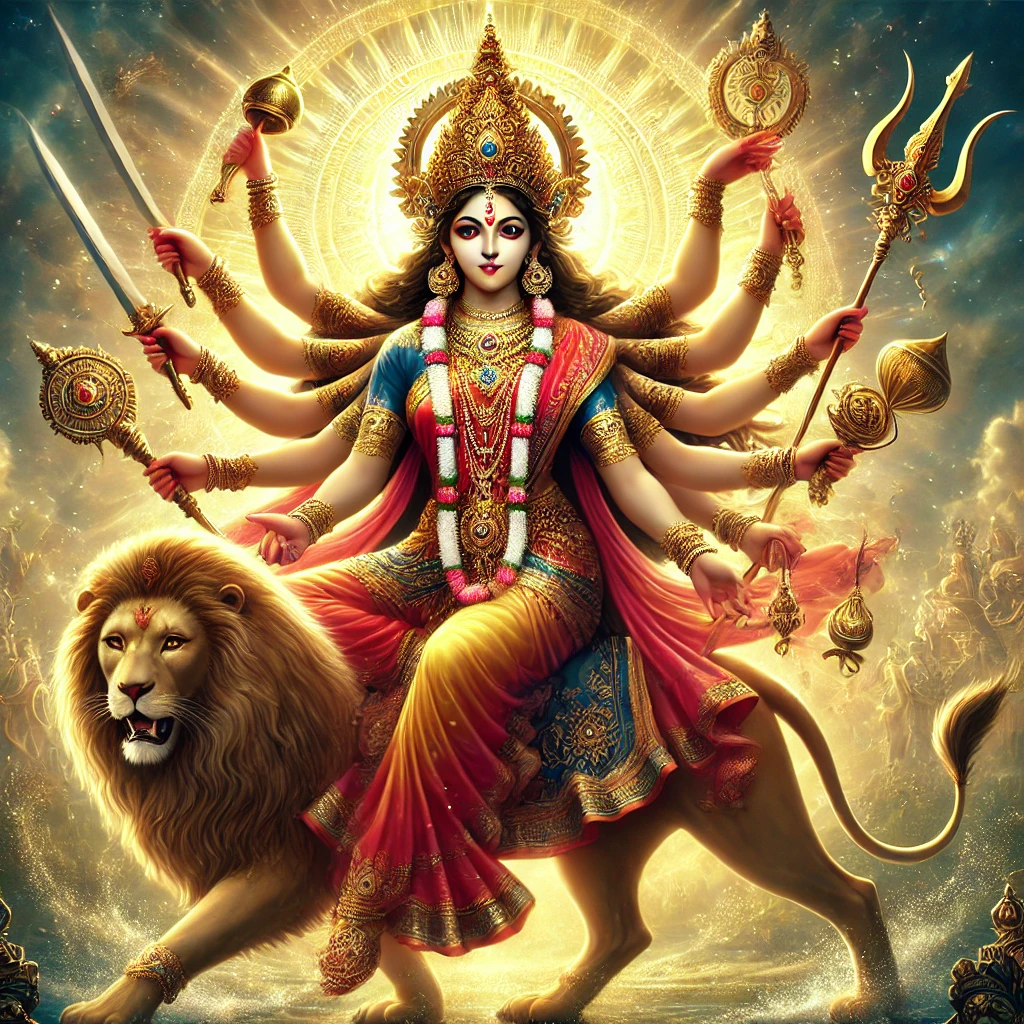
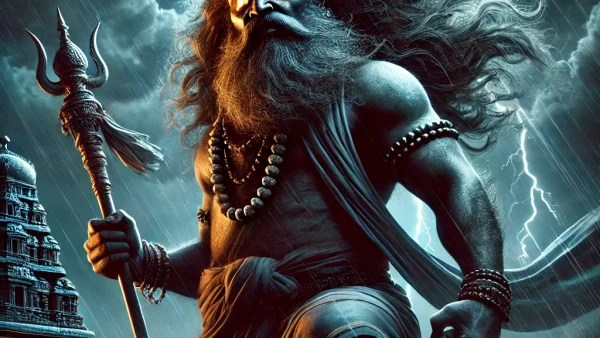
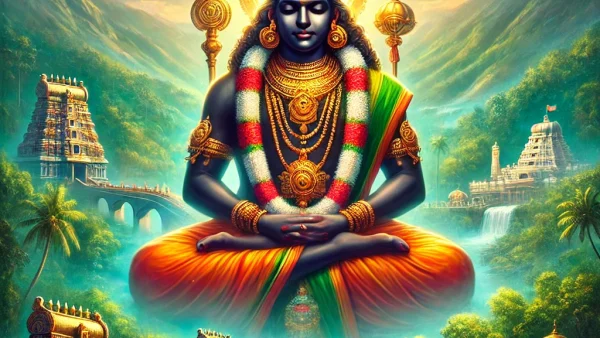
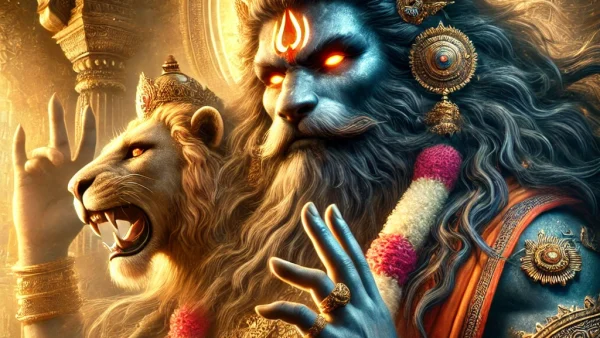
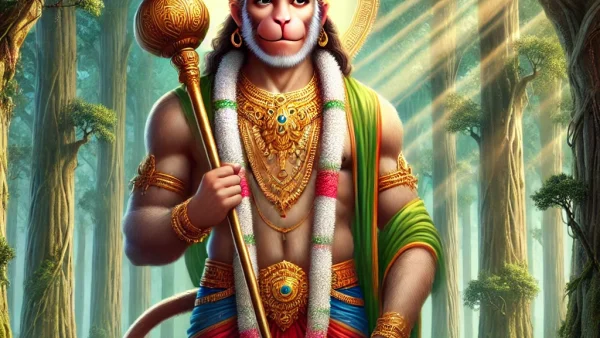
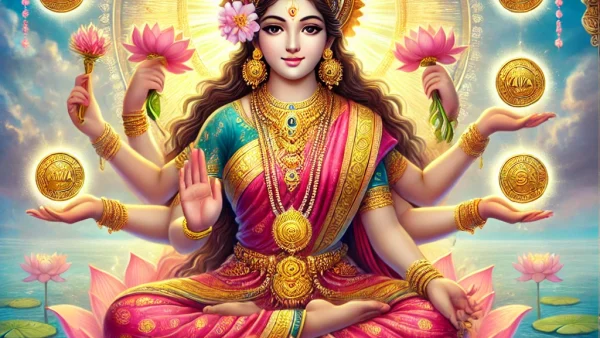
Pingback: 9 Mukhi Rudraksha Benefits - Spiritual Guru
Pingback: Who is Goddess Katyayani? Fierce Form of Divine Mother - Dharma Pulse
Pingback: Hidden Deities of Hinduism: Exploring the Unseen Pantheon - Dharma Pulse